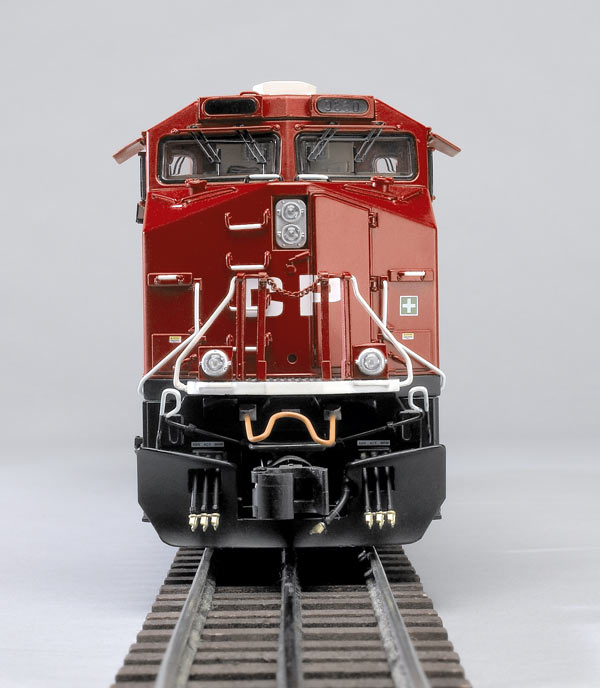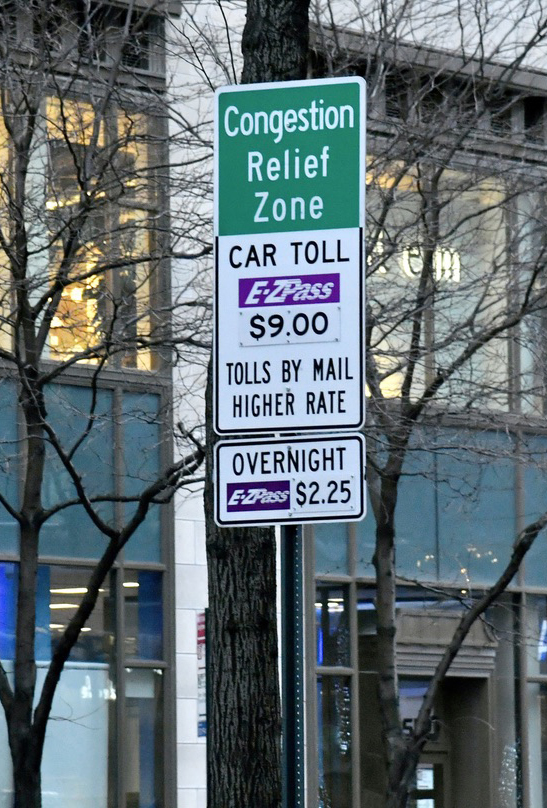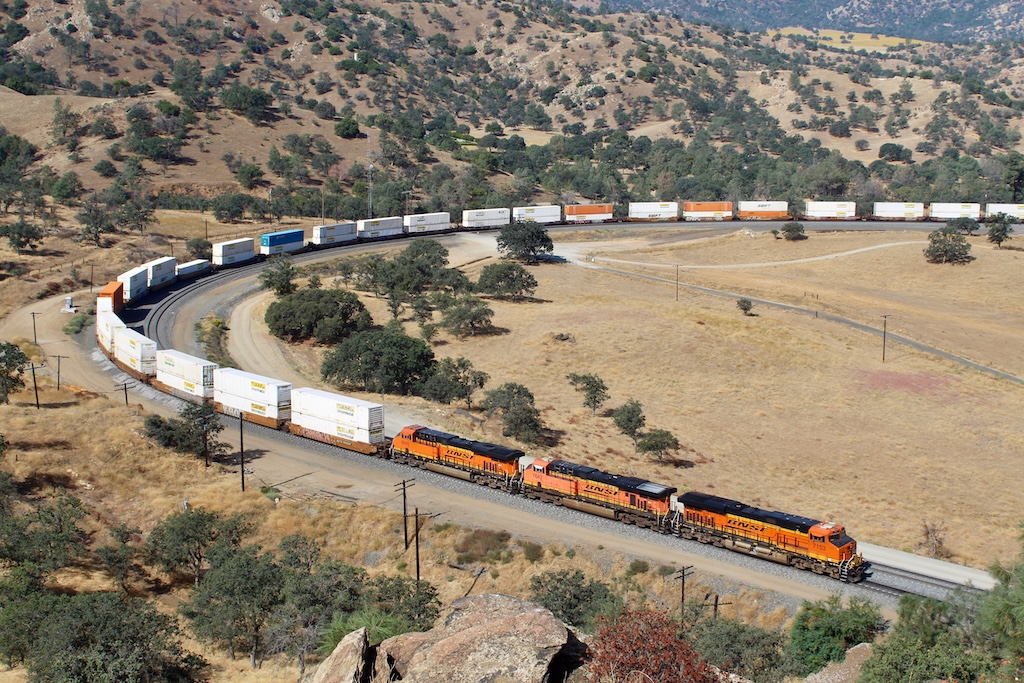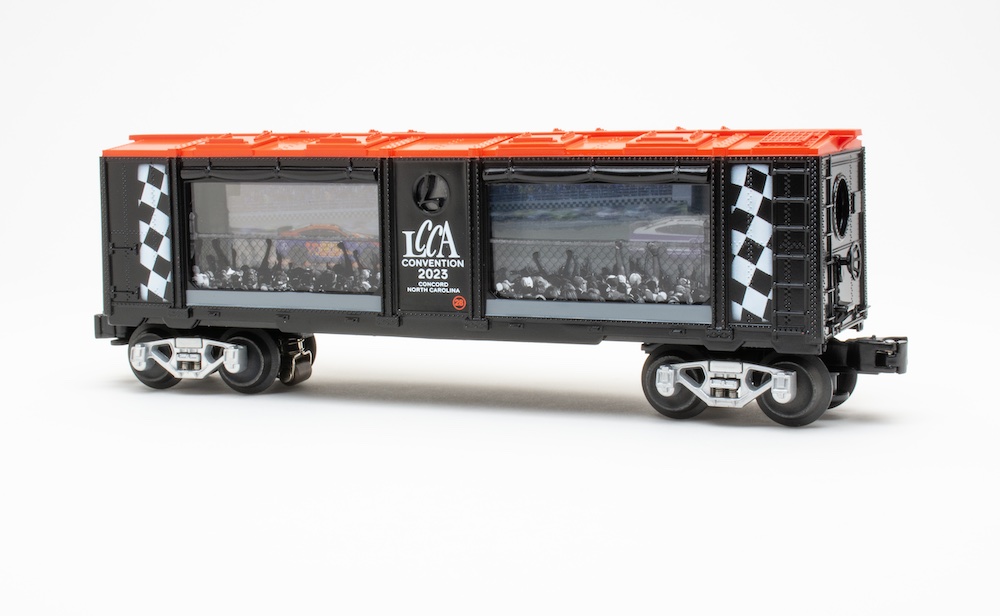O gauge vision line GE Hybrid ES44AC by Lionel
In the February 2011 issue, we reviewed Lionel’s O gauge GenSet locomotive – a fuel-efficient and environmentally friendly switcher that used multiple smaller diesel engines that kicked in as warranted.
For switching or light roadwork, this is a clever and innovative approach to saving both a dime for the railroad and some exhaust fumes from mother nature. But big-time freight railroading requires a differing approach. I mean, with 100 cars in tow, you pretty much have to start out with all cylinders firing.
So General Electric sent its techno wizards into the lab to concoct some environmental voodoo that would squeeze out better fuel efficiency as well as generate cleaner exhausts to meet EPA standards. The result was the Evolution Series of locomotives, which are now pulling trains from Omaha to Kazakhstan.
These revolutionary GE models offer real railroads higher reliability and lower life-cycle costs. Compared to earlier locomotives, they use 5 percent less fuel and reduce emissions by 40 percent, and GE touts that they are 6 percent more fuel efficient than “GE’s closest competitor in North America.” I wonder whom they mean by that?
But this is more the subject area of the latest issue of Trains magazine, not Classic Toy Trains, so let’s focus on this O gauge model. Suffice it to say the professional railroad community is very pleased with the product and keeps coming back with additional orders.
Opening the box
Let me state up front that CTT’s Kent Johnson is the proud papa of our test subject. Kent, a devoted Canadian Pacific fan, was one of the first to order this model in CP red. He carried the ginormous box into my office wearing a huge grin.
The packaging alone is worth noting. The box has a large color image of the model – all the better to snare some unsuspecting customer with an impulse buy, no doubt. Once the lid is off, the side flops down for easier access. The locomotive is protected to the max to prevent damage in shipment.
Once I had it out of the box, I noticed the beloved-by-many radiator wings that extend over the rear of the locomotive.
But more about the wings, later.
Starting at the pilot, you’ll find one of those “So that’s where the money went” details. An air line feeds out through the center of the snowplow, and three other lines feed through two slots on either side of the coupler. Each line has a gold-colored tip as the connector, but the really cool thing is that if you look behind the plow to where the lines exit the frame, you’ll see nomenclature identifying what each line is for.
You’ll find an uncoupler arm above that and ditch lights that flash alternately. Nose handrails and grab irons are painted white (in the case of the grab irons, they are both red and white). Body handrails are red. The lip of each step is white.
The nose has at least 17 (by my count) add-on irons or handles and a nice variety of nomenclature placards. There is an over-under headlight in the center of the snout and a door to the right of that.
Each window on the front of the locomotive has two wiper arms, and above each window you’ll find two grab irons and illuminated number boards.
The top of the cab roof has an air conditioner and assorted radio/GPS equipment. As on Lionel’s GenSet, the cab roof lifts off and you’ll find a fully detailed cab with equipment racks, controls, crewmen, and backlit gauges.
Let me make a comment about the body of the locomotive. It is die-cast metal, which makes this a heavy son of a gun. I mention this simply because one of the most obvious add-on details of the modern diesel model area is not what I expected.
Except for a pair of rings on each side behind the cab, all the lift rings are cast in. Nothing wrong with that, and understandable with a metal shell, but obvious if rings matter to you.
The body has a good level of detail with rivets, seams, latches, air-filter screens, handles, and hinges. Along the top, you’ll find an add-on horn and smoke unit.
Checking out those radiator wings, you can look down and see two exhaust fans. Far from being eye candy, they actually function. In a vein similar to that of the GenSet’s individually raising exhaust stacks, when you hit a certain rpm/speed level, the fans start to spin, simulating the prototype’s action.
Looking at the locomotive from the side, you can easily see how much time went into the decoration. Three manufacturer’s plates are on the nose. Various safety warnings and notes dot the body as well as the frame.
The fuel tank caps are annotated, and the fuel sight gauge has a white accent trim on the side.
The General Electric-style trucks are nothing less than works of art.
Painting and decoration of the simple Canadian Pacific paint scheme are first rate.
On the test track
Operation was smooth and pleasant. The Legacy command control system made operation easy and responsive.
The conventional low-speed average was 3.77 scale miles per hour, while the command-mode low speed was 1.5 scale miles per hour. Our high-speed average was 107.3 scale miles per hour.
Drawbar pull was 3 pounds, 13 ounces, placing this model in our upper tier of O gauge locomotion.
The speed control was flawless in command mode and delivered good performance in conventional mode, though the locomotive seemed slightly less smooth when running at the lowest tested speeds.
Operational switches are hidden beneath the radiator wings, with switches for smoke unit, speed control, chase lighting, run/program, and bell-horn to RailSounds options. There are also a dial for sound level and a slot for a battery backup.
The lighting package is AWESOME. No, my shift key didn’t get stuck. I’m really impressed. Not only do you have the usual forward/backward directional lighting in the form of bright LEDs, this model adds tiny green strobes that flash in sequence along the side of the frame.
The cynic in me might ask, “How much electricity is being used on the side lights of the real thing just to tell you the battery is charging?”
But I won’t ask that. But it sure makes the model stand out when running on O gauge track.
The locomotive has two operational quirks. First, the coupler shaft is inclined to stay toward the center. If you have, say, a postwar Lionel boxcar in tow, the freight car’s coupler shaft isn’t flexible enough to accommodate the locomotive as it rounds curves and will pull the coupled car off the rails.
The problem disappears when using modern cars, such as an Atlas O Trainman series. If you want to run postwar, a modern car up front would serve as a good buffer – simply couple shorter shaft cars behind this transition car, and all will be well.
The other quirk deals with switch machine clearance on Kent Johnson’s O gauge layout.
While the semi-fixed pilot (front and rear) contributes to the precise O scale appearance of the locomotive, it does have one drawback to operation on his layout. Kent uses turnouts from Ross Custom Switches exclusively, with sizes ranging from O-54 to no. 8. The Hybrid can handle all these standard switches, but is derailed by a lone curved O-54/O-72 switch on the main line.
Kent notes that the trouble is when the model enters into either the through (straight – O-72) or diverting (curved – O-54) paths, the semi-fixed pilot does not pivot enough to clear the switch motor mounted along the outside of the switch.
Rather than look to modify this top-notch diesel, Kent plans to swap out the original switch motor for a lower profile DZ-2500 or mount the motor under the layout surface to avoid any possible interference in the future.
The Hybrid’s sound system is stunning. The motor and rev sounds are trackside quality, and the horn is second to none. A simple blast or two was usually good enough to draw passersby into the workshop to see what was up.
Smooth performance, a fully decked out cab, a dynamite paint scheme, and a neat psychedelic chase light system make this one of the more interesting modern locomotives I’ve operated. This is a pricey model, but a surefire crowd-pleaser.
Features: O-54 operation, two can-style motors, smoke unit, coil couplers, Lionel Legacy sound and control systems















I've read this article twice, in the magizine and on-line and I really want to buy this engine. But, my layout trackage is 100% Super 'O' so I'm scared stiff this CP beauty will become a train shelf decoration. Is there any hope that it will clear #112 switch motors? Ted
It would be nice if Lionel would make ES44AC in S gauge… I have had American Flyer trains since 1950… Was in engine service with the Santa Fe RR between Bakersfield and Needles in the early 50's … Serve in the ARMY 52-54 with the 724th RR in Korea as an engineer… Also I was an test engineer with GE in 1957 after college for their new gas turbine locomotive… All in all, your new engine is a very nice looking engine… Hard to say it's an toy… PS… I look forward to every copy of your trains mag… Keep on High Balling it… Darrel